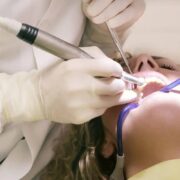
Every German is prescribed 4.7 daily doses of antibiotics every year.
Even if you don’t see them, they are there: antibiotics in meat from factory farming.
Antibiotics are as life-saving as they are controversial. While the amounts prescribed in human medicine are declining, massive amounts continue to be used in factory farming. The result: people eat meat from animals that have been defined four times as many antibiotics as they have at the same time.
Antibiotics: risk of resistance due to frequent or incorrect intake
Antibiotics are highly effective against bacteria, so they are so important in medicine. However, if they are used too frequently, dosed too low, or taken for too short a time, pathogens can develop resistance to the antibiotics – the antibiotic in question is then ineffective.
Meat animals: Four times as many antibiotics as in humans
“Most people don’t realize how much this adds up to overtime,” says Tim Lilling.” The consumer portal has now calculated in detail how many antibiotics people are prescribed – and how much in the same time go through the animal meat, which people then eat with an appetite as rump steak, liver sausage, or chicken wings. “
On average, every German has prescribed 47 daily doses of antibiotics within ten years,” says Lilling, “the ones he received during this time animals consumed an average of 219 daily doses.”
Employees of the German Environmental Aid made 62 test purchases from discounters and sent the turkey meat they bought to the laboratory for analysis.
Antibiotics: Only applicable if taken precisely
This does not mean that this amount arrives one-to-one in humans when they eat the meat of these animals. But it illustrates the problem that the European “Antibiotics Awareness Day” wants to draw attention to every year on November 18th. The fact is that meat consumption today is very often also antibiotic consumption – and in a dosage that is entirely random and arbitrary and does not meet the strict requirements of a medical prescription. This is no coincidence: the doctor’s exact dose and duration is a decisive factor in the tightrope walk that has to be mastered when administering antibiotics: success, side effects, and risks are very closely related here.
Why antibiotics are problematic in animal husbandry
One of the biggest problems in industrial meat production is the preventive use of antibiotics. Because animals in large numbers can become ill quickly, they are often treated before they even become sick. And: If an animal becomes sick, the entire herd is usually treated again because of the risk of infection.
AOK study: 670 t of antibiotics per year in meat production
According to a study by the Scientific Institute of the AOK , the relationship between the prescription for humans and livestock is not quite as dramatic as determined – but it is still severe enough. According to Wido, 670 tons are administered against infectious diseases in meat animal husbandry in Germany every year – almost twice as much as in human medicine. Here it is 339 tons.
EU: 33,000 deaths a year from multi-resistant germs
Antibiotics reach consumers through the food chain: through the consumption of beef and pork, poultry and fish, and groundwater. The increasing resistance to antibiotics, in which animal production and meat consumption play a significant role, is already causing severe health problems worldwide. According to the European disease agency ECDC, around 33,000 people die every year in the EU alone from infections with multi-resistant germs, against which the available antibiotics are powerless.
Resistance problem: Experts warn of “pandemic.”
The problem could soon get worse: Experts warn that in the future, not only mass diseases such as corona caused by pathogens but also non-contagious – and thus much easier to avoid – diseases could take on pandemic-like dimensions. In addition to the problem of resistance and the loss of effectiveness of antibiotics, this also includes, for example, type 2 diabetes.
Everyone can calculate meat and antibiotic consumption for themselves.
Because every consumer has a different amount or little meat, each individual can use the “meat calculator” platform to calculate how large the antibiotic dimension is for their consumption per year. “He also sees how limiting his meat consumption would affect the use of antibiotics,” says a statement from the portal. The calculator determines the current meat consumption and calculates how this consumption consumes many antibiotics and resources. The user also learns how many antibiotics and resources could be saved if – at least part of the meat – were replaced by alternative protein sources.














